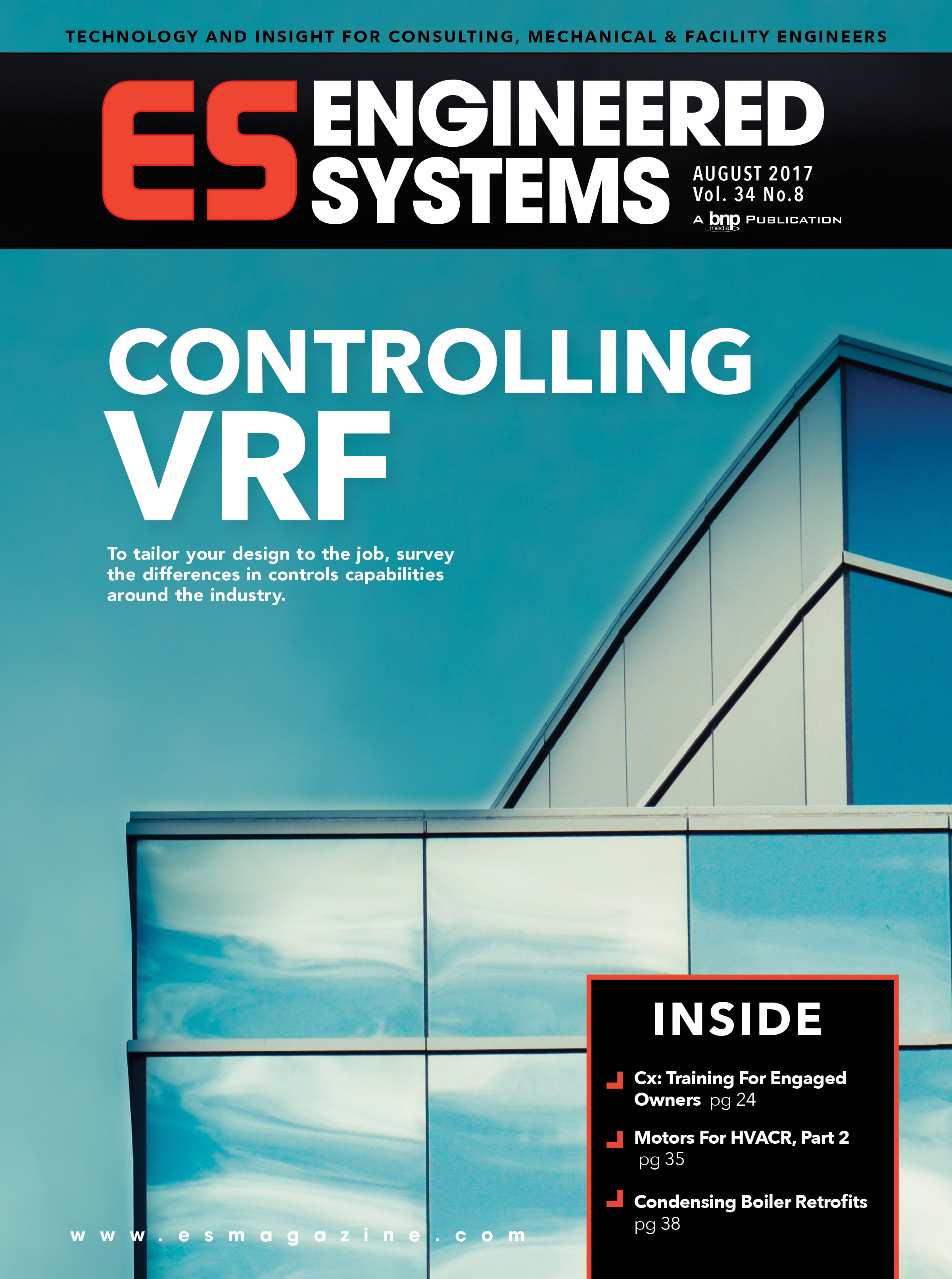Last month (December 2008), this column presented the concept of the design and construction commissioning process as being the first step in ongoing systems optimization. End-of-construction testing and documentation establishes a performance baseline that should only be improved upon as the building is occupied and put into regular operation. What can be done in the design and construction process to help prepare for the owner’s future measurement, verification, and optimization?
Start Early
The following are a few areas of post-construction operational (optimization) planning which I believe should occur during the design phase of a new project. This early planning can help ensure that the hardware and software elements needed to implement the owner’s optimization plan are included in the systems design with minimal or no cost impact. Although universal to any system performance requirements, the following focuses on energy performance optimization.Because we cannot manage what we cannot measure, one of the fundamentals of an optimization plan will be tracking of key system performance parameters. The BAS is a great tool for this type of monitoring. Incorporated into typical BAS design specifications is the monitoring of the points necessary for programming and implementation of the design engineers’ sequences of operation for each system. These control points will often include most, but not all, of the parameters desired for energy performance monitoring.
For example, in an air-handling system with a preheat coil, cooling coil, and fan, the preheat coil and cooling coil valves may be controlled to maintain a fan discharge air temperature setpoint. This will only require control points for modulating the two valves and monitoring the fan discharge temperature. An additional energy monitoring point might be the supply air temperature between the preheat coil and the cooling coil. By monitoring that temperature - along with the valve controls - it would be possible to program the BAS to alarm if there is evidence of unintended simultaneous heating and cooling. Discharge air temperature alone would not typically identify this energy-wasting scenario.
Think Ahead
Whereas the design engineers traditionally are expected to specify all of the required BAS control points, the building operators need to be involved in determining which additional energy performance monitoring points would be most valuable to their future optimization program. Thus, there needs to be close collaboration between the design team and the future operators during the design phase so that all desired BAS points are incorporated into the bid documents.Once the key energy performance monitoring points are identified, the building operators need to be able to describe how they want to use that data. The BAS should be specified to be programmed for continuous trending of selected data in carefully considered groups of points; groups of points that, together, provide much more information than just individual data point trends.
For example, continuing the AHU scenario, one energy monitoring trend log could collect and store the following points every 15 min: the mixed air temperature (upstream of preheat coil), the temperature between the preheat coil and the cooling coil, the fan discharge air temperature, the preheat valve output signal, the cooling valve output signal, and the fan status. A quick glance at a graph of this trend log would identify any unintended heating or cooling at the two coils (e.g., malfunctioning valves).
The trend data should be collected continuously and stored for future reference, analysis, troubleshooting, and benchmarking. The BAS specification needs to be very clear about central computer hard drive capacities and automatic archiving of data. The archiving specification is especially critical, because if the data is not stored in a manner that allows it to be easily retrieved, it will not be beneficial to the system operators. Thus, everything from electronic file names, formats, and searchability needs to be clearly defined.
Although most design specifications require that a new BAS system be capable of trending and archiving data, they do not actually require the controls contractor to set up permanent trend logs and program specific archiving protocols. This needs to change in order for the BAS to be used for the owner’s ongoing optimization program starting at the end of construction.
When specified to be set up and operational before commissioning testing begins, the commissioning professional can verify that the trend logs have been properly programmed and can validate their data as part of the functional performance testing process.
In summary, the ongoing operations/optimization program is not something the design engineer can or should plan for in a vacuum. It is critical to envision the future operations/optimization program for the systems being designed, but that vision must be the building owner’s, not the design engineers’. Therefore, it is imperative that the building owner/operator plan for the ongoing operations/optimization program in parallel with the engineers designing the systems. This will take the integrated design process to a new level.ES




